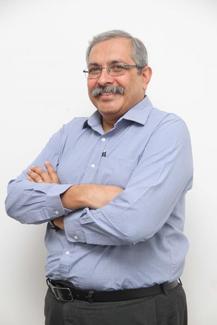Devang V Khakhar
Core Faculty
Professor

151, Chemical Engineering
Core Faculty
Professor
Amar Dyechem Award Indian Institute of Chemical Engineers 1993.
Fellow Indian Academy of Sciences Bangalore December 1996.
Shanti Swarup Bhatnagar Prize Engineering Sciences Council for Scientific and Industrial Research 1997.
Swarnajayanti Fellowship Department of Science and Technology 1998.
N. R. Kamath Memorial Lecture IPI 1999.
Herdillia Award Indian Institute of Chemical Engineers 1999.
Millennium Gold Medal Indian Science Congress 2000.
Fellow Indian National Academy of Engineering 2001.
Excellence in Teaching Award IIT Bombay 2001.
Fellow Indian National Science Academy 2002.
MRSI Medal Lecture 2003.
H. H. Mathur Award for Applied Sciences IIT Bombay 2005.
Indira Manudhane Best PG Teacher Award Chemical Engineering Department IIT Bombay 2005.
Powders, or granular materials more generally, are widely handled and processed in different industries (e.g., pharmaceutical, chemical, ceramic, steel, food and agriculture). The flow of granular materials is quite different from fluids and in the case of mixtures, the particles have a tendency to spontaneously separate out (segregate). We have been working on developing an understanding of the rheology and mixing/segregation of granular materials using experiments, continuum models and particle level DEM simulations. Much of the early work related to flow, mixing and segregation of nearly spherical particles in prototype systems like rotating
cylinders and heap flows and was done in collaboration with the group of Prof. J. M. Ottino (Northwestern University). Recent works focus on understanding the special aspects of the flow of non-spherical grains (prolate particles) using DEM simulations and experiments. The objective is to determine the rheology of the flow of such particles. Another problem we have been looking at pertains to the flow during feeding of raw materials into a blast furnace, used in steel manufacture. Detailed experimental studies using high speed videography have been carried out in a model system to measure the flow profile and the segregation as particles flow on the free surface of a heap. Granulation is a process in which a liquid binder is sprayed on a stirred fine powder to cause particles to agglomerate into larger granules, which are easier to handle. Granulation is widely used for products such as detergents, fertilisers, pharmaceuticals, pesticides. We have been studying a subset of the granulation process: the breakage of granules during the granulation process. The work, partially supported by Proctor and Gamble and in collaboration with Prof. Karen Hapgood (Monash University), is based on experiments and DEM simulations.
Our recent work on polymers focuses on the rheology, processing and properties of polyvinylidene fluoride (PVDF), a unique polymer with excellent piezoelectric properties. The is being done in collaboration with Prof. Ashok Misra. An important application of the polymer is for pressure based sensors for a wide variety of uses. The polymer has several crystal phases of which the beta phase is the one with the best piezoelectric properties. Normal processing results in formation of alpha phase crystals, which have no piezoelectric response. Drawing (stretching) of films to four times their length causes a transformation from the alpha to beta phase. We have studied how processing conditions affect the formation of the beta phase as well as the effect of additives on the rheology and dielectric properties of the polymer. The processing is done at a small scale (5 g) as well as at a pilot scale in a continuous extruder system.